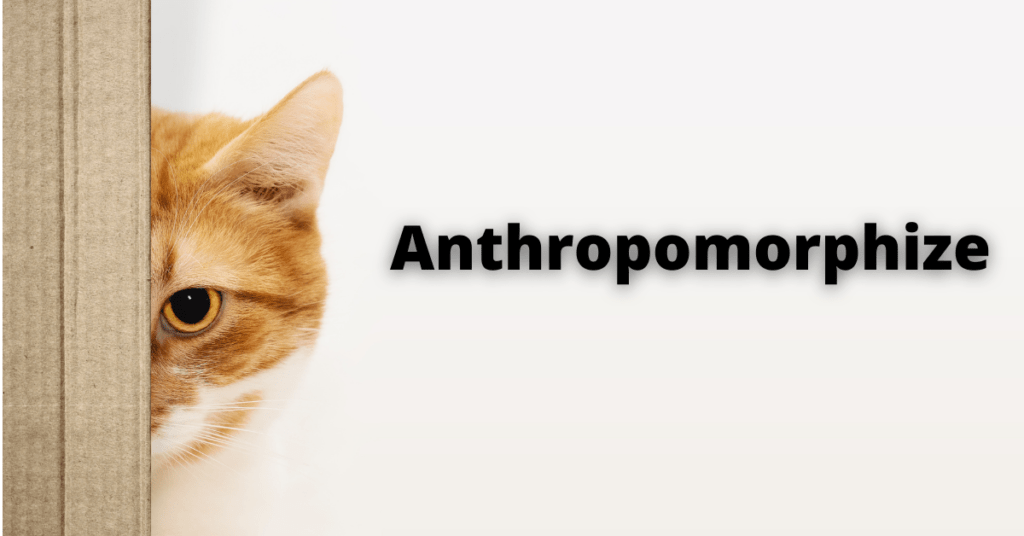The word anthropomorphize is defined as attributing human characteristics to an animal or inanimate object. This phenomenon has been studied extensively by psychologists for decades and continues to be a hot topic today. The question remains: why do people love turning animals into humans?
This article will look at the psychology behind this fascinating topic. It explores what it means when we attribute human qualities to creatures that are not really human at all.
Contents
Meaning of Anthropomorphize
When you anthropomorphize an animal or object, you are giving it human qualities. You might see a dog wagging its tail and think that the dog is happy, or see a cat stretching and think that the cat is relaxing. In reality, these animals could be doing any number of things that have nothing to do with happiness or relaxation.
In order to understand why we anthropomorphize, it is important to know a bit about evolutionary psychology. Humans have evolved over time so that brains can help you survive and thrive in the world around you. You are constantly looking for patterns – including patterns of behavior – so that we will be able to anticipate what might happen next. For example, if you see a dog wagging its tail, your brains might interpret this as a sign that the dog is happy. This allows you to predict that the dog might be friendly and approach it accordingly.
The same principle applies when you anthropomorphize animals or objects. When you give them human qualities, you are essentially trying to understand their intentions. You might see a dog wagging its tail and think that the dog is happy, but in reality, it could be hungry or trying to get rid of some excess energy.
Why Do People Anthropomorphize?
There can be many reasons that someone might anthropomorphize.
- One of the biggest reasons is that it makes you feel good about yourself. When you see an animal acting in a way that seems to mimic human behavior, your brains are able to understand what they’re doing and why they’re doing it. This gives you the feeling that there might be something “human” about them – that they might be a little more like you than you originally thought.
- Another reason why people anthropomorphize is to create connections with animals or objects.
- Many pet owners anthropomorphize their animal companions because it creates an emotional bond between the two of them. This can also help people who suffer from loneliness and depression feel as if they have someone else in their lives, even if that other person doesn’t really exist outside of your imagination!
- Finally, one last reason for anthropomorphization has to do with storytelling and creativity. Movies and books often feature humans and animals in the same roles. It can be more interesting for a human character to befriend an animal rather than another human because that creates conflict and tension without having to deal with interpersonal relationships or any type of complex social hierarchy.
Side-Effects of Anthropomorphizing
These can be possible side effects of anthropomorphizing animals or other objects. Some of these are:
- One of the biggest side effects is that you might get attached to something more than you should be, causing problems when it comes time for certain actions (such as if an animal were sick and needed veterinary care).
- You can also lose sight of what’s actually happening around you because your brains are so focused on interpreting things in terms of human behavior.
- It can cause you to have unrealistic expectations of other people or animals, which can lead to disappointment and frustration.
- Lastly, it’s possible that anthropomorphism can cause you to miss out on important information because you’re too busy trying to see things in a certain way.
How Can You Avoid Anthropomorphizing?
If you are trying to avoid anthropomorphic thinking, there are several steps that you can take.
- First of all, try taking your time when observing something so that it doesn’t seem quite as urgent or pressing. If you do this on a regular basis while walking around outside, for example, your brains might not have enough information about what is actually going on so will instead rely on patterns they recognize from other situations where someone is happy or sad.
- Second, try to be more aware of your own biases. For example, if you know that you’re a dog person and love all dogs, you might be more likely to anthropomorphize them when you see them acting in a certain way. Try to step back and observe the animal without any preconceived notions about what it should or shouldn’t do.
- Finally, ask yourself why you feel the need to anthropomorphize something in the first place. Is there some sort of emotional connection that you’re looking for? Or are you just trying to make sense of something that doesn’t seem quite rational? Understanding your motivations can help keep Anthropomorphism at bay.
Conclusion
Anthropomorphism is a powerful tool that humans use to make sense of the world around them. It can be helpful when trying to understand someone else’s point of view. This can also be harmful if we rely on it too much. By being aware of the different reasons why you might anthropomorphize something, you can take steps to avoid doing so. This can help you to better appreciate the world for what it is.
If you are looking for affordable Online Counseling MantraCare can help: Book a trial therapy session


